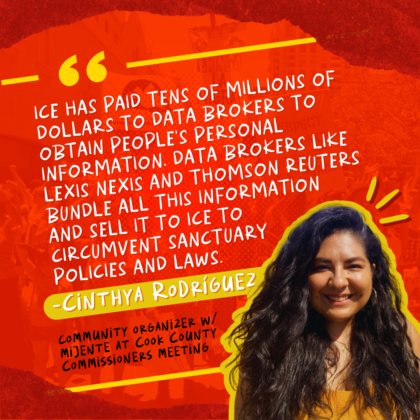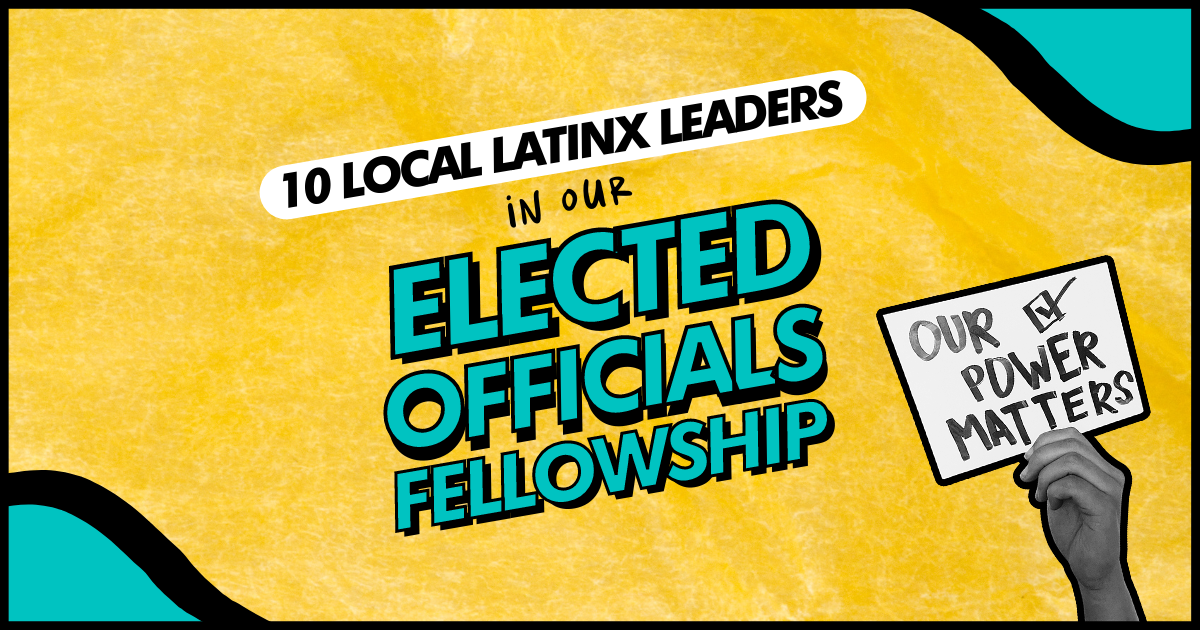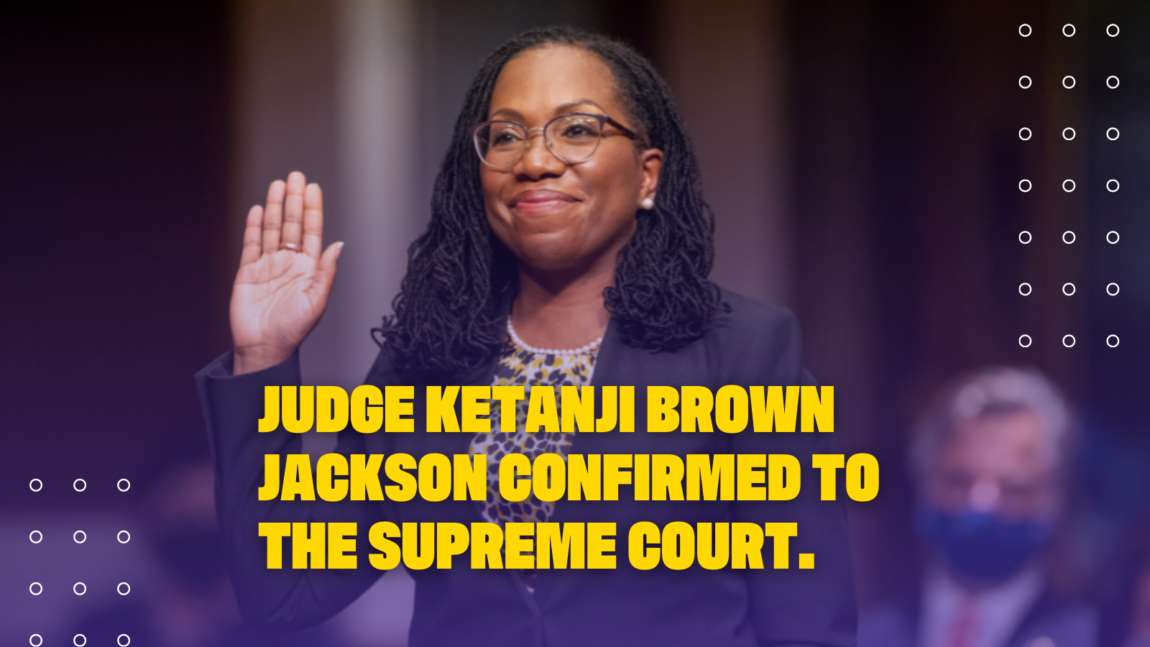When it comes to our changing climate in the modern era, the science has been crystal clear: We are in the midst of a Climate Emergency. Mijente believes that in order for our gente to reach El Buenvivr, it includes us being in the right relationship with the natural world around us. To treat the earth that we live on with reverence: as the source of energy, nourishment, and healing that it is.
We recognize the political implications of climate change too: lower income, indigenous, and migrant communities are often the first groups to feel the impacts of environmental crisis and harm. That’s why recognize pro-pachamama as a core value for Latinx and Chicanx people and those allied with us el la lucha for a better world.
Below, we share more about the climate crisis: what it means for us all, how to be pro-pachamama, and how we can organize for better.
From Climate Change to Climate Emergency
Climate change refers to shifts in the typical environmental conditions of a place. This results in warming global temperatures that disrupt the usual balance of nature. Climate Emergency is “a situation in which urgent action is required to reduce or halt climate change and avoid potentially irreversible environmental damage resulting from it.”
In past decades, greenhouse gas emissions have been rising steadily contributing to global warming. As the gasses trap heat and cause warming, environmental and societal systems, critical for our earth’s longterm stability, are strained.

In the US, the greatest source of greenhouse gas emissions stems from the burning of fossil fuels for transportation, electricity, and heat. Despite understanding the global consequences of our contribution to climate change, the US gas emissions rate has remained higher than that of 1990.
How does climate change impact poverty?
Impoverished communities experience higher rates of the negative effects, due to their increased exposure and vulnerability. This impacts lower-wage and undocumented workers, communities in rural or underdeveloped areas, and people with less access to healthcare resources and affordable treatment, and so many more.
Climate change widens the wealth gap. Environmental changes due to warming could push an additional 100 million people below the poverty line by 2030. Climate change disproportionately affects people in developing countries around the world – especially migrant communities fleeing climate disaster.
How does climate change impact immigration?
Instead of serious climate action, and supporting people harmed by the impact of their emissions, the richest countries are trying to deal with climate change using weapons and walls….Every day, people have to face multiple forms of violence. From the damage caused by the extractive [carbon] industry, to climate disasters, to border brutality when they have to move.
Jacinta Gonzalez, Senior Campaign Organizer, Mijente
With climate change reshaping the conditions we live in, the physical, socioeconomic, and environmental vulnerabilities of communities across the globe shift. This includes food and water scarcity, air pollution, displacement from sea level rising and drought, jeopardized livelihoods due to changing environments and jobs, and more. Then, individuals make difficult decisions to leave their homelands, turning to migration to secure better living conditions for themselves and their families.
When it comes to climate disaster, our common enemy is the capitalist system that values profits – whether from carbon extraction or border violence – above human life.
Check out our clip on “Why Climate Justice Needs to Include Migrant Communities”
What does it mean to be Pro-Pachamama?
Pachamama is a Quechua and Aymara word rooted in two words: pacha which means earth and mama meaning mother. For many of our indigenous compas, Pachamama is a revered goddess, where the land itself as Mother Earth is honored and blessed. Among others, in Peru, Bolivia, and Ecuador giving an offering to Pachamama is one of the indigenous people’s oldest and most sacred rituals.
To be pro-pachamama is to commit to the demands of climate justice. To understand Mother Earth as subject not object. To acknowledge the harms of colonization and recover ancestral, indigenous practices. To evaluate how we use our resources and remain open to accountability.
On this international Earth Day, we invite you to lean into Pachamama. Take time today to reflect on what it means to be in right relationship with your environment.

Here are a few offerings to start:
Recite the Haudenosaunee Thanksgiving Address as a guiding reflection on your connections
Practice indigenous self-care rituals shared by Mijente founder & Ifa Practitioner Francisca Porchas Coronado
Listen to La Cura Podcast episode on The Power of Water Healing feat. healing artist Rocio Navarro
How do we organize for better in a climate emergency?
We start with acknowledging the truth: The climate crisis is a systemic issue that requires organizing for radical policy change and the will to stand up to corporations who legally exploit our resources. Often mainstream and media focus turns toward changing consumer behavior, and the responsibility of climate change is inaccurately placed on individuals. This conveniently ignores the disproportionate impact of corporate interests on the environmental crisis.
Climate change places immense hardship on marginalized communities and the earth at large. And still, corporations, protected by lobbying, continue to put their bottom line and profits first. In these times of skyrocketing gas prices and privatization of utility companies, people are feeling the pressure. We must demand that our government and representatives take necessary steps to tackle the root causes.
There are many societal factors at play that we must address at a federal and local level if we want to get ahead of the climate crisis, including: inaccessible and unreliable public transportation, unsafe and incomplete walkable infrastructure, inability to afford gas car alternatives, the $7.25 federal minimum wage.
As the Biden Administration continues to push forward the Build Back Better Plan, our communities must be vocal about the demands for a Green New Deal and policies addressing the issues mentioned above. We must listen to the concerns of indigenous peoples and the needs of migrant communities. Our survival, and our hope for El Buenvivlr, depends on it.



























